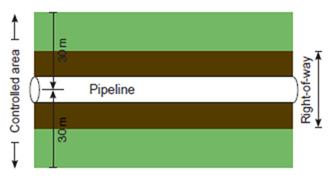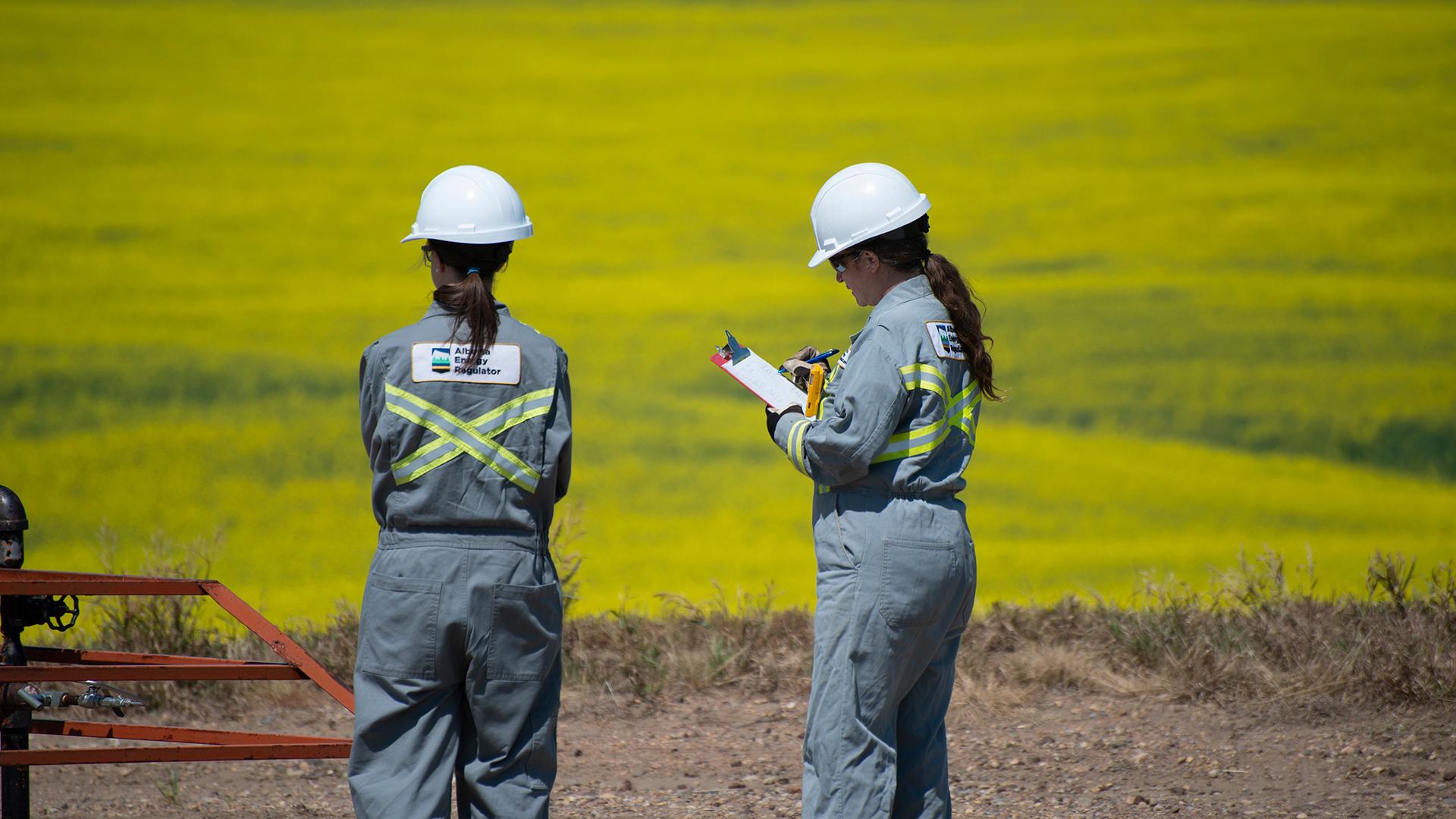Before beginning work around an AER-licensed pipeline, it is important to determine whether a pipeline exists within the planned ground disturbance area and obtain all the required approvals to ensure that the safety of workers, the public, and the environment.
Follow the requirements in Part 4 of the Pipeline Rules and sections 32, 35, and 42 of the Pipeline Act. Below is a brief overview of what to do and who to contact when planning surface work or a ground disturbance around oil and gas pipelines. This information applies to pipelines that we regulate.
Ground Disturbance Near a Pipeline
Ground disturbances, as defined under the Pipeline Act, include excavating, digging, trenching, plowing, drilling, tunnelling, auguring, backfilling, blasting, stripping topsoil, levelling, removing peat, quarrying, clearing, grading, and pounding posts. Ground disturbance does not include
- a disturbance of the earth to a depth of less than 30 centimetres that does not result in a reduction of the earth cover over the pipeline to a depth that is less than the cover provided when the pipeline was installed, or
- cultivation less than 45 centimetres deep.
Learn more about ground disturbance and the AER’s role in administering the Pipeline Act, as well as requirements and recent changes to the Pipeline Rules.
Prepare to Carry Out a Ground Disturbance
Before conducting a ground disturbance
- search for pipelines beyond 30 metres (m) of the perimeter of the area planned for disturbance, and
- contact Utility Safety Partners and request the location of any buried utilities in the area.
Not all underground services are registered on the Utility Safety Partners system—do not assume they are!
In addition to contacting Utility Safety Partners, here are some other ways to search for pipelines:
- Check with local utility providers.
- Check the land title for easements or rights-of-way.
- Look for pipeline warning signs, typically located at road or water crossings.
- Look for nearby wells, tanks, valve stations, and meter stations, which might indicate the presence of a pipeline.
- Look for ground settling from previous work.
- Talk to nearby residents and landowners.
- If there is no current licensee for the pipeline, hire a pipeline locating service.
- Check available online mapping, including AER's OneStop.
Determine Where Work Is To Be Conducted Around a Pipeline
Pipeline Right-of-Way
A pipeline right-of-way (ROW) is the land allocated for the pipeline and its maintenance. A pipeline ROW is often defined in a written agreement between the landowner and the pipeline company. The ROW width is usually less than 30 m but might vary.
The land title or easement should identify the ROW width. Do not assume pipelines are in the middle of the ROW.
Controlled Area of a Pipeline
A pipeline’s controlled area is a strip of land 30 m wide on each side of the pipeline, measured from the centre of the outermost pipeline. If the ROW extends beyond 30 m from the centre of the outermost pipeline, the entire ROW is the controlled area.

Contact the Pipeline Licensee
If working in the controlled area, but outside of the ROW, notify the pipeline licensee of the work so it can locate and mark the pipeline location as required by the Pipeline Rules.
If working inside the ROW or within five metres of the pipeline where there is no designated pipeline ROW, you may not proceed without the licencee's written consent, and the licensee must locate and mark the pipeline location and provide supervisory assistance.
Contact the licensee through the use of the call-out program administered by Utility Safety Partners.
Persons conducting the ground disturbance should also contact the pipeline licensee for approval to cross a pipeline with heavy vehicles or equipment. If the pipeline licensee does not respond, see the Unresponsive Pipeline Licensee section for how to proceed.
Report Any Incidents
Report all incidents for AER-regulated pipelines to us, including when there is contact with a pipeline but no leak.

For more information about conducting a ground disturbance around a pipeline, see our Safe Excavation Near Pipelines brochure. For rules and requirements that must be followed when working around pipelines, see the Pipeline Act (sections 32, 35, and 42) and the Pipeline Rules (Part 5, "Ground Disturbance"). Noncompliance could result in injury or environmental damage. Penalties for a contravention can include fines or prosecution, and civil claims for damages.


